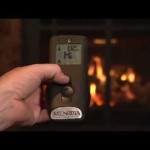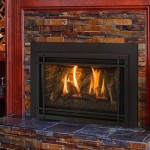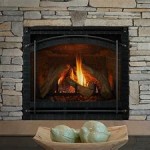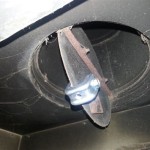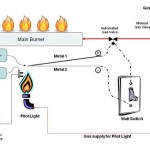Parts of a Fireplace Surround Diagram
A fireplace surround is the decorative frame that encloses the fireplace opening. It serves both aesthetic and functional purposes, enhancing the visual appeal of the fireplace while providing a barrier between the fire and the surrounding walls. Understanding the different parts of a fireplace surround is crucial for both homeowners and those involved in fireplace design and installation. This article will provide a comprehensive overview of the components that make up a fireplace surround, along with their functions and considerations for choosing materials.
1. Hearth
The hearth is the flat, usually stone or tile surface in front of the fireplace opening. It serves as a fire-resistant platform for placing logs and other combustibles. The hearth's size and material must meet safety codes to prevent fire hazards. The hearth can be made of various materials like stone, brick, tile, or concrete.
Hearth extensions, also known as hearths, are optional extensions that extend the hearth out from the fireplace opening. They provide additional space for seating or decorative items. The extension should be made of fire-resistant materials and built to code specifications.
2. Mantel
The mantel is the horizontal shelf that sits above the fireplace opening. It's a decorative element that adds visual interest and can be used to display ornaments, pictures, or other items. Mantels can be made of various materials, including wood, stone, metal, and plaster. The material choice often reflects the overall design style of the fireplace surround.
The mantel's design can vary, from simple and understated to elaborate and ornate. It can be a single piece or composed of multiple pieces, such as corbels or brackets, to create a more intricate look. The mantel's height and depth should be balanced with the overall dimensions of the fireplace and room.
3. Jambs
The jambs are the vertical sides of the fireplace opening. They frame the fireplace and provide support for the mantel. Jambs can be made of various materials, including brick, stone, wood, or plaster. The choice of material should complement the other elements of the fireplace surround and the overall room design.
Jambs can be plain or decorative, depending on the desired aesthetic. They can feature moldings, carvings, or other embellishments to create a more elaborate look. The width of the jambs can vary depending on the fireplace size and the desired style.
4. Lintel
The lintel is the horizontal beam that sits above the fireplace opening and supports the mantel. It can be made of various materials, including wood, stone, or steel. The lintel is a crucial structural component of the fireplace surround, ensuring its stability and strength.
The lintel's design should be compatible with the mantel and jambs, creating a visually cohesive unit. The lintel's size and weight must be sufficient to support the mantel and any additional weight placed on it. It's important to ensure the lintel is properly installed and meets building codes for safety.
5. Firebox
The firebox is the enclosed space within the fireplace where the fire is contained. It's typically made of brick or stone and is lined with firebrick to withstand high temperatures. The firebox is equipped with a damper, which allows for controlling the airflow and regulating the fire.
The size and shape of the firebox determine the amount of heat generated by the fireplace. A larger firebox will produce more heat, while a smaller firebox will be more efficient for smaller spaces. The firebox's design should be optimized for efficient combustion and optimal heat transfer.
6. Stile
The stile is the vertical post that runs along the side of the fireplace opening. It forms the edge of the fireplace surround and can be made of various materials like wood, stone, or metal. The stile can be plain or have decorative elements, such as moldings or carvings.
The stiles play a role in the aesthetic and functional aspects of the fireplace surround. They create a defined edge and can be used to incorporate decorative details. The stiles should be carefully constructed to ensure they are sturdy and able to withstand the weight of the mantel and other elements.
7. Reveal
The reveal is the space between the fireplace opening and the fireplace surround. It's the visual gap that allows the fireplace to be framed and integrated into the surrounding wall. The reveal can be adjusted to create different visual effects, with a large reveal creating a more prominent and imposing fireplace.
The reveal's size and shape can be influenced by the material used for the surround and the desired aesthetic. A greater reveal can add visual interest and create a more dramatic effect, while a smaller reveal can make the fireplace appear more integrated with the wall.
8. Panel
The panel is the flat surface that fills the area between the stiles and the hearth. It can be made of various materials like wood, stone, or metal. The panel can be plain or decorated with moldings, carvings, or other embellishments to enhance the overall design of the fireplace surround.
The panel plays a crucial role in the overall aesthetic of the fireplace surround. It can be used to create continuity and a sense of visual unity with the other elements, such as the hearth, mantel, and stiles.
9. Decorative Elements
Besides the main structural components, there are various decorative elements that can be added to a fireplace surround to enhance its visual appeal. These include:
- Corbels: Decorative brackets that support the mantel, adding visual interest and architectural detail.
- Moldings: Decorative strips of wood or other materials that can be applied to the jambs, mantel, or panel to create visual interest.
- Carvings: Intricate details carved into the wood or stone of the surround, adding a touch of artistry and craftsmanship.
- Fireplace Screens: Protective barriers placed in front of the fireplace opening to prevent sparks and embers from escaping.
The choice of decorative elements should be based on personal preference and the overall design style of the fireplace surround and the room.

Parts Of A Fireplace Chimney Explained With Diagrams And Real S

Fireplace Surround Labels Helpful To Share With Clients When Describing Parts Of Their New

Fireplace Terms

Understanding The Anatomy Of A Fireplace Madewell Masonry

How To Design And Make A Ceramic Fireplace Surround

Fireplace Surrounds Canadian Woodworking

Designing Your Fireplace Laird Plumleigh

Parts Of A Fireplace Explained With Diagram Homenish

Parts Of A Fireplace So Cal Chimney Services

Is A Masonry Fireplace Right For Your Home Hometips
Related Posts



